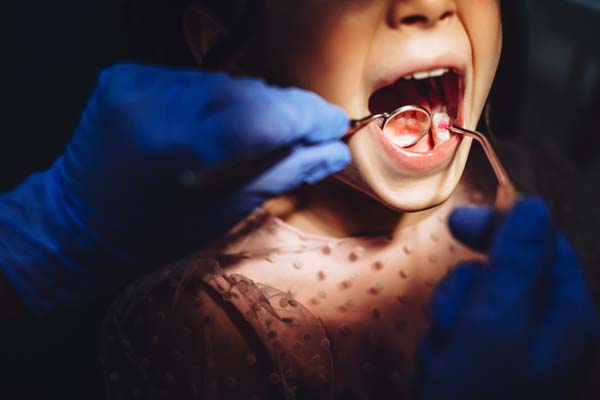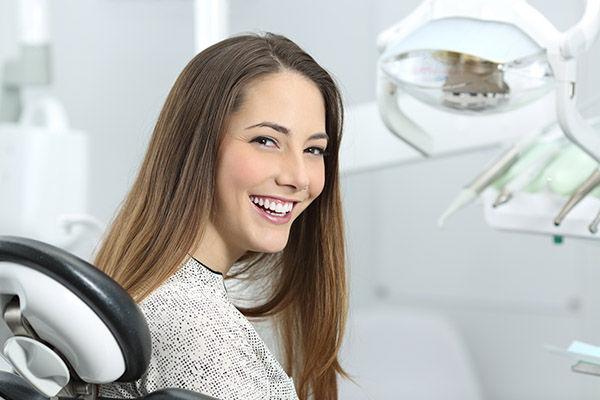Phase 1 Orthodontics FAQs

Phase 1 orthodontics involves treatment to adjust the position of the teeth in the mouth. This treatment begins in patients between ages six and nine to correct misaligned teeth. Because patients are young, they have a mix of baby teeth and adult teeth. Some parents worry about phase 1 orthodontics and what it entails. These are some frequently asked questions about phase 1 orthodontics.
Who can benefit from phase 1?
As many as three out of four children experience abnormal jaw growth or crowding issues. Between the ages of six and nine, many kids lose their deciduous or baby teeth and have new permanent teeth come in faster than kids experience jaw growth. This uneven development can lead to overcrowding and misalignment. This, in turn, can cause long-term issues with bite, chewing, abnormal tooth wear, and concerns about appearance. Children who show early signs of these issues can be good candidates for phase 1 orthodontics.
What are some of the procedures?
There are several ways that orthodontists can treat overcrowding and misalignment. These procedures differ from one patient to another. The doctor will take into account how well a patient will do with some therapies like headgear or retainers. Some of the most common procedures include:
- Tooth extraction: orthodontists may extract one or more teeth in the patient’s mouth. The teeth that the doctor extracts will depend. It could be due to overcrowding, or it could be because it is preventing a permanent tooth from coming in properly. Sometimes, baby teeth do not come out when they should, so the doctor will pull them.
- Space maintainers: if the orthodontist pulls some teeth in order to allow for the permanent teeth underneath to come up, then they may place space maintainers or spacers. This allows the adult teeth to come in without the obstruction of the previous tooth. By creating space, it allows the tooth to align better. An expansion appliance works similarly to create more space for future tooth eruption.
- Braces: in phase 1 orthodontics, braces are often limited over a small expanse of teeth. Because the teeth are often mixed, braces would be used on the permanent teeth to correct misalignment. These braces can move teeth that have shifted off-center. Even limited braces can close unwanted spaces.
Is my child too young?
Doctors recommend phase 1 orthodontics for children at this age because the goal is to reduce future dental problems. In later adolescence, the jawbone hardens, and teeth set firmly. It is much harder to correct alignment. As adult teeth begin to replace baby teeth, the orthodontist can note if teeth begin to turn or protrude. Misaligned teeth can cause overbite, underbite, and abnormal tooth wear.
A child who suffers from severe tooth or jaw problems at a very young age can have interceptive orthodontics. These early braces can correct cosmetic issues. It can also remove bullying and anxiety from a child’s life. It can also elevate the child’s self-esteem. Below are some of the dental conditions that phase 1 orthodontics can help with:
- Finger or thumb-sucking habits
- Crossbites of back and front teeth
- Spacing between teeth
- Deep overbite
- Dental crowding
- Underbite
- Flared upper teeth
Why a dentist may put braces on primary teeth
Putting braces on primary teeth can get rid of specific dental issues. Sometimes, dentists need to do this to achieve the desired outcome for the child’s permanent teeth. Baby teeth serve as anchors to close up dental space, close open bites, or even remove dental crowding. This will require the child to avoid hard foods and wear elastics with the braces.
Why a child may need to have an orthodontic checkup before seven years old
Before seven years of age, a child will start having adult teeth. There may still be some baby teeth left. This will be the most appropriate time to spot possible orthodontic problems with the child’s oral development. It is easier to correct any orthodontic issue while the jaws and teeth are still developing. Early detection and treatment can help the child’s speech and dental functions improve right away.
Consult your dentist about Phase 1 orthodontics
Phase 1 orthodontics is personalized. Some children with cleft lip or cleft palate may need phase 1 orthodontics along with other corrective procedures. Other children have several adult teeth come in before the jaw has grown large enough to accommodate them. It can be difficult to know whether to wait or to take action. A consultation with an orthodontist can help to figure out what issues may be going on.
Request an appointment here: https://www.orthodonticprecision.com or call Precision Orthodontics & Pediatric Dentistry at (703) 391-8800 for an appointment in our Reston office.
Check out what others are saying about our dental services on Yelp: Orthodontics for Children in Reston, VA.
Recent Posts
As you prepare to get braces and start wearing them, you may be a little nervous. It can take some time to get used to this treatment. You will encounter some challenges, but the result can help you achieve your goals. During the process, you need to be diligent about caring for your braces. This…
There are many reasons why you might seek orthodontic care. For example, crooked teeth or a crowded mouth can hinder your smile and make you feel embarrassed. Oddly shaped teeth or gaps in the mouth are other common concerns that many patients have. Another frequent smile-related challenge that an orthodontist may address involves bite abnormalities.…
Having orthodontic care makes a lot of sense in many situations. If you have crooked teeth or bite dysfunctions, this treatment may be right. Orthodontics can also be effective if you have gaps in your mouth or oddly shaped or worn teeth. The same is true for a crowded mouth. If you neglect to seek…
Misaligned teeth often cause secondary oral health issues that affect a person’s daily life. This is why dentists need to monitor the growth and development of the teeth and jaws starting from when the patient is a young age. These periodic dental checks allow for early detection and intervention for orthodontic problems.While an orthodontist would…


